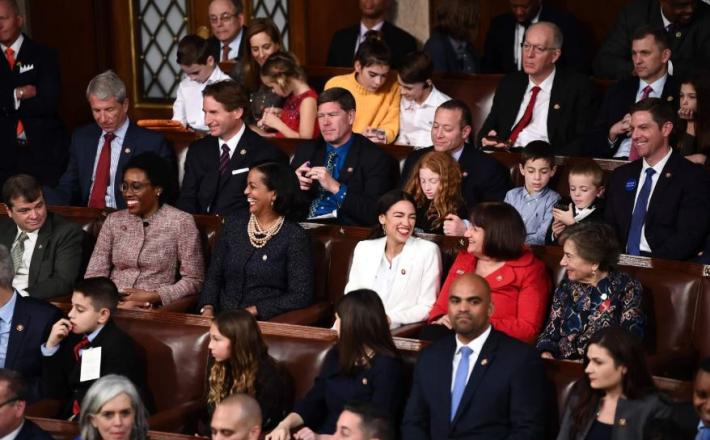Congress is more heavily female than at any point in history — thanks solely to new Democrats
Source: The Washington Post
By Philip Bump,
On Thursday, the most heavily female House of Representatives in U.S. history selected a woman as its leader for the next two years, setting a new high-water mark in the gender diversity of the House and Congress as a whole.
That shift is entirely a function of newly elected Democrats — and means that the density of women on Capitol Hill is still less than half of the density of women in the populace.
That said, the past 30 years have seen a big spike in the number of women in the House and the Senate, as data from the Center for American Women and Politics at Rutgers University shows.
What’s remarkable, though, is how that growth has been driven mostly by the addition of new Democratic women. Since 1989, the number of Republican women in the Senate increased from one to eight; the number of Democratic women in the Senate grew from one to 17. In the House, the difference was much more stark: The number of Democrats grew from 16 to 89 — and, as CNN’s Ryan Stryuk noted on Twitter on Thursday, the number of Republican women didn’t change at all.
Click here to read the full article published by The Washington Post on 3 January 2019.

By Philip Bump,
On Thursday, the most heavily female House of Representatives in U.S. history selected a woman as its leader for the next two years, setting a new high-water mark in the gender diversity of the House and Congress as a whole.
That shift is entirely a function of newly elected Democrats — and means that the density of women on Capitol Hill is still less than half of the density of women in the populace.
That said, the past 30 years have seen a big spike in the number of women in the House and the Senate, as data from the Center for American Women and Politics at Rutgers University shows.
What’s remarkable, though, is how that growth has been driven mostly by the addition of new Democratic women. Since 1989, the number of Republican women in the Senate increased from one to eight; the number of Democratic women in the Senate grew from one to 17. In the House, the difference was much more stark: The number of Democrats grew from 16 to 89 — and, as CNN’s Ryan Stryuk noted on Twitter on Thursday, the number of Republican women didn’t change at all.
Click here to read the full article published by The Washington Post on 3 January 2019.